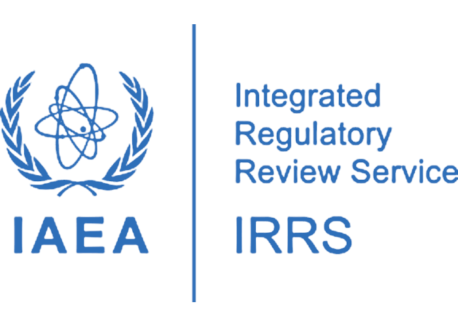IRRS Mission to Switzerland: Swiss nuclear oversight under international review
The IRRS mission will be taking place in Switzerland from 18 to 29 October 2021. As part of this mission, experts from the International Atomic Energy Agency (IAEA) will be reviewing the Swiss regulatory system and ENSI’s work.
To what extent do the regulations on nuclear safety and security in Switzerland meet IAEA standards? How are the requirements for nuclear installations and oversight specified in legislation? How robust is ENSI’s oversight in practice? These questions are subject to scrutiny in the IRRS mission.
IAEA safety standards
The International Atomic Energy Agency (IAEA) supports international cooperation and harmonisation in respect of oversight by developing safety standards and recommendations in the areas of reactor safety, radiation protection, nuclear waste disposal and the transport of radioactive substances, as well as for radiological emergency preparedness and the safeguarding of nuclear installations and nuclear materials.
IAEA safety standards are constantly being updated by the experts of the IAEA member states to ensure that they reflect the current state of science and technology. Switzerland participates actively in this work through its own experts.

IRRS stands for “Integrated Regulatory Review Service”. From 18 to 29 October, experts from the International Atomic Energy Agency (IAEA) will be compiling a detailed picture of ENSI’s work through the IRRS mission: from licensing procedures to communication and inspections of the regulated parties. Pursuant to Art. 2 para. 3 ENSI Act, ENSI is obliged to undergo an international review every ten years.
The aim of the mission is to verify the implementation of the IAEA safety standards in Switzerland. “We are more than happy to undergo a review by international experts,” says ENSI Director General Marc Kenzelmann on the start of the mission on 18 October 2021. “On the one hand, this external assessment ensures that our oversight work is putting the IAEA regulations into practice. On the other hand, recommendations from international experts on issues highlighting room for improvement are valuable for our work.”
This is what ENSI Director Marc Kenzelmann says about the launch of the IRRS mission
Last IAEA review called for more powers to be awarded to ENSI
The last IRRS mission took place in Switzerland in 2011. In 2015, the IAEA reviewed how ENSI had implemented the recommendations. The final report of this follow-up mission was published in summer 2015. The group of experts appraised the recommendations and suggestions, which were mainly addressed at ENSI, as having been implemented. “The progress made since the 2011 IRRS mission shows that ENSI is taking the opportunities for improvement seriously,” said Jean-Christophe Niel, head of the then IRRS mission, in 2015. “The IRRS team regards ENSI as an established and competent nuclear regulator”.
However, in 2015, the team of senior experts from other regulatory authorities also reiterated its recommendation that ENSI as a technical nuclear regulator be given more powers in defining mandatory safety requirements and licensing requirements in the areas of safety, security and radiation protection. The conclusion of the expert group at the time: “The government has not done enough to ensure that ENSI alone has the authority to take final safety decisions”.
ENSI has answered 2000 questions on oversight posed by the IAEA ahead of the mission
For this year’s IRRS mission, the IAEA has assembled a team of 23 experts. Now, in strict compliance with local COVID-19 protection measures, it is investigating how ENSI applies and implements IAEA safety standards . The IRRS mission is being led by Petteri Tiippana, Director General of the Finnish Radiation and Nuclear Safety Authority STUK.
To review the Swiss regulatory system, the experts conduct interviews with ENSI employees, with the operators of nuclear installations and with representatives of various national authorities and organisations. Moreover, ENSI specialists are accompanied during inspections.
Prior to the 2021 IRRS mission, two years of internal preparation has taken place: ENSI provided detailed information on the various topics of oversight and oversight practice. A catalogue of 2,000 questions has been compiled for the mission.
ENSI will communicate the recommendations arising from the 2021 mission on the oversight of nuclear safety via its website, and plan its implementation accordingly.

